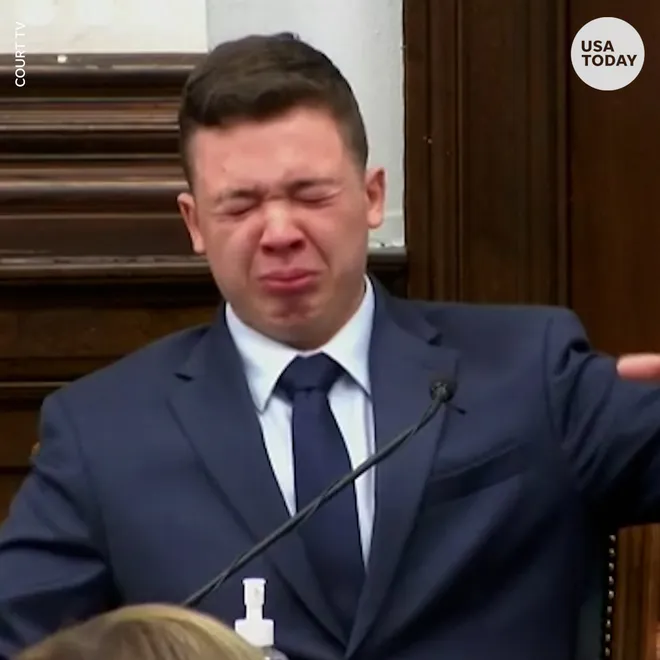The Kyle Rittenhouse Trial: What Happened?
On November 2, 2021, the trial for Kyle Rittenhouse in the killing of three men began. 17-year-old Kyle Rittenhouse shot and killed two men by the names of Joseph Rosenbaum, 36, and Anthony Huber, 26, while severely injuring Gaige Grosskreutz, 27, during a protest against police brutality in Wisconsin. After three-and-a-half days of deliberation, a Kenosha County Circuit Court jury acquitted Rittenhouse of all five charges: first-degree intentional homicide, attempted first-degree intentional homicide, first-degree reckless homicide, and two counts of first-degree recklessly endangering safety. The charge against illegal possession of a firearm as a minor being dropped by Judge Bruce Schroeder early in the trial.
The shooting took place on August 25, 2020 in the city of Kenosha in Wisconsin, at a protest in solidarity with Jacob Blake, a black man who “had been shot and left paralysed by a white police officer,” writes Independent. Rittenhouse, who was seventeen at the time and residing in Antioch, Illinois with a strong “Blue Lives Matter” presence online, says that he had originally traveled to Kenosha with a friend, armed with an illegally owned AR-15 assault rifle, to protect vandalized businesses and medically aid those who were hurt. “By the third night of protests, Rittenhouse had joined a group of armed men” who vowed to assist the police, New York Times states. The protests had come increasingly chaotic as more clashes with law enforcement took place. As Rittenhouse was amongst the protestors displaying an assault rifle, he got into angry confrontations with a few of the protestors attempting to disarm him. Ultimately, Rittenhouse shoots Rosenbaum, Huber, and Grosskreutz, claiming that it was only in self defense since they made attempts to take his rifle away. “The teenager then walked away from the scene with his hands in the air and the rifle strapped across his chest, permitted to pass unimpeded by police,” a scene that striked criticism amongst the public, notes Independent.
Nearly fourteen months later, the trial takes place. In the defense’s opening statements, Rittenhouse’s lead attorney Mark Richards “painted Rittenhouse as someone with strong ties to Kenosha,” says the New York Times. Richards said that Rittenhouse went to Kenosha with innocent motives and to join others interested in protecting businesses from protestors. With the use of photos and video footage, Richards argued that Rittenhouse was first pursued by Rosenbaum and fellow protestors, saying that they “attacked him in the streets like an animal.” Richards ultimately argues that Rittenhouse acted in self-defense against people who were “determined to injure him, take his firearm away, and possibly kill him,” New York Times writes. Richards also characterized the people shot by Rittenhouse as the aggressors, saying the mob had a “marauding nature.” On the other hand, prosecutors argued that the people killed were citizens trying to stop an active shooter. Lead prosecutor Thomas Binger “portrayed Rittenhouse as an outsider who traveled to Kenosha…[to] add to the civil unrest in the city,” New York Times says. The prosecutor argues that Rittenhouse was the one to insert himself into the protests and “initiate the confrontation” that led to the shooting of three men. Binger says that amongst the chaotic gunfire, tear gas, and clashes throughout the protest “the only one who killed anyone was the defendant, Kyle Rittenhouse.” Binger largely focused on the shooting of Joseph Rosenbaum. He said that evidence would prove that the fatal shot would hit Rosenbaum’s back, following the previous shots to his pelvis and leg. Binger said that “infrared video taken from an airplane by the F.B.I.” would show that Rittenhouse initiated the confrontation by chasing Rosenbaum before shooting him. Prosecutors also questioned what threat Rosenbaum posed, unarmed, to Rittenhouse who was armed. He replied, “If I would have let Mr. Rosenbaum take my firearm from me, he would have used it and killed me with it and probably killed more people.” Kyle Rittenhouse himself said that he went to Kenosha with an intent to medically aid those who were injured. He said that Rosenbaum was the first to interact with him saying that he would “kill [him] if he found him alone,” New York Times says. Rittenhouse said that Rosenbaum later chased him with a crowd who believed him to be an active shooter, which he replied by shooting at the crowd who he believed to be a “grave threat.” The prosecution examined Rittenhouse with many concerns about why he was carrying a rifle and “inserting himself into a highly volatile situation with a group that was unlikely to appreciate his presence,” writes the New York Times. Prosecutors suggested that Rittenhouse was the one to initiate danger, and questioned why he went to lengths to obtain an illegal firearm, protect a car dealership he had little connection to, and enter Kenosha after curfew, a county which he didn’t belong to. Binger also questioned Rittenhouse’s credibility, saying that he “misrepresented his medical credentials while patrolling the streets.” Throughout the questioning, Rittenhouse struggled to give a clear answer as to why he was carrying a firearm in the first place, being said his intentions were to provide medical aid. As well as perceived as an E.M.T., a lie he told to journalist outlet The Daily Caller when asked what he was doing at the protest. “I brought the gun for my protection,” Rittenhouse said.
After hours of deliberation, Kyle Rittenhouse was found not guilty on all charges. Rittenhouse is seen becoming emotional after hearing the verdict and going to embrace his defense attorney. Richards is seen slamming his hand on the table in jubilation, while prosecutors simply looked down. Families of Rosenbaum, Huber, and Grosskreutz held hands and cried.

